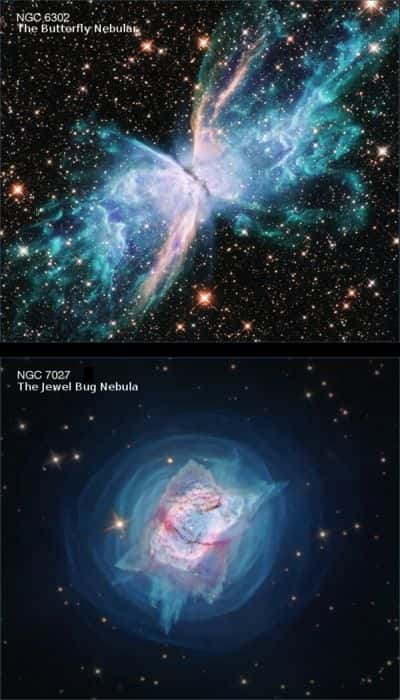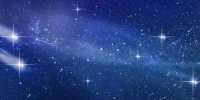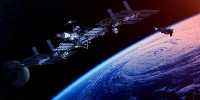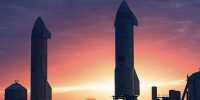Astronomers dissect the structure of planetary nebulae using Hubble Space Telescope images. Photos of two famous planetary nebulae captured by the Hubble Space Telescope are providing new knowledge on how they develop their dramatic characteristics. Researchers from the Rochester Institute of Technology and the Green Bank Observatory reported new observations on the Butterfly Nebula (NGC 6302) and Jewel Bug Nebula (NGC 7027) at the 237th meeting of the American Astronomical Society.
New images from the Hubble Space Telescope have helped researchers identify rapid changes in material blasting off stars at the centers of two nebulas — causing them to reconsider what is happening at their cores.
Hubble’s Large Field Camera 3 observed the nebulae in 2019 and early 2020 using its full panchromatic capability, and the astronomers participating in the project used emission-line images from near-ultraviolet to near-infrared light to learn more about their properties. The experiments were first-of-the-kind panchromatic imaging surveys designed to explain the mechanism of formation and test models of binary-star-driven planetary nebula formation.
The Jewel Bug Nebula is what is considered a planetary nebula: a dense system of dust and gas that has been swept out from a dying star. Astronomers don’t really understand how these complicated shapes form, but we do know that we are concerned with the consequences of a star exhaling its atmosphere in bursts and the material reacting with any companion stars or planets that might be in the system.

“We’re dissecting them,” said Joel Kastner, a professor in RIT’s Chester F. Carlson Center for Imaging Science and School of Physics and Astronomy. “We’re able to see the effect of the dying central star in how it’s shedding and shredding its ejected material. We’re able to see that material that the central star has tossed away is being dominated by an ionized gas, where it’s dominated by cooler dust, and even how the hot gas is being ionized, whether by the star’s UV or by collisions caused by its present, fast winds.”
The Jewel Bug Nebula is thought to be about 600 years old, or about the age of the Ming Dynasty vase. In this time, the material has traveled out and away from where the 1-8 sun-massed star once shone, and as it moves away, it has been cooling down. The nucleus of the star, now a white dwarf, may always be in the middle throwing off strong UV light, but astronomers have not yet been able to see the stars within this system. What seems to be a star in the middle is the only potential conjunction of a random star between us and this nebula.
Kastner said that the study of the latest HST images of the Butterfly Nebula confirms that the nebula was expelled just around 2,000 years ago—an eyeblink according to the norms of astronomy—and that the S-shaped iron emission that tends to lend it the “wings” of gas could be much younger. Fortunately, they discovered that although astronomers historically assumed that they had discovered the central star of the nebula, it was really a star not affiliated with the nebula that is much closer to Earth than the nebula. Kastner said he hoped that future research with the James Webb Space Telescope would help to find the real central star.
The team’s continuing study of the Jewel Bug Nebula is based on a 25-year baseline of observations from early Hubble imaging. Paula Moraga Baez, an astrophysical sciences and technology Ph.D. student from DeKalb, Ill., called the nebula “remarkable for its unusual juxtaposition of circularly symmetric, axisymmetric, and point-symmetric (bipolar) structures.” Moraga added, “The nebula also retains large masses of molecular gas and dust despite harboring a hot central star and displaying high excitation states.”
Jesse Bublitz’s 20 Ph.D. (Astrophysical Sciences and Technology), now a postdoctoral researcher at the Green Bank Observatory, continued study of NGC 7027 with radio images from the Northern Extended Millimeter Array (NOEMA) Telescope, which detected ultraviolet and X-ray molecular tracers that appear to form the nebula. The combined observations of telescopes at other wavelengths, such as Hubble, and the bright molecules CO+ and HCO+ from NOEMA show how various regions of NGC 7027 are influenced by the irradiation of its central star.
“We’re very excited about these findings,” said Bublitz. “We had hoped to find a structure that clearly showed CO+ and HCO+ spatially coincident or entirely in distinctive regions, which we did. This is the first map of NGC 7027, or any planetary nebula, in the molecule CO+, and only the second CO+ map of any astronomical source.”
One of the most fascinating and confusing aspects of planetary nebulae is the array of forms that come in. In addition to watching the Jewel Bug Nebula, Kastner and his colleagues have studied the nearly 2000-year-old Butterfly Nebula. Both systems are believed to have binary stars in their centers, and it is likely that the reason they appear so strikingly different is merely a viewing angle. In this device, the narrow body of the butterfly is ashes, and the hot ionized iron traces the top of the right-wing and the bottom of the left-wing. The object isn’t flat, however, and the butterfly is more like an hourglass viewed edge-on, while the Jewel Bug is more like a really warped hourglass viewed from the top down.
















